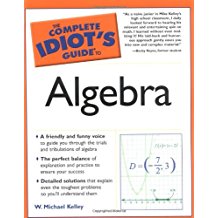Algebra: The Inequality Mood Swing
The Inequality Mood Swing
To solve an inequality that contains only one variable, just follow the same steps you used to solve equations. In other words, simplify both sides of the inequality, isolate the variable, and then eliminate the variable's coefficient. However, there is one major difference between equations and inequalities: When solving an inequality, if you ever multiply or divide both sides by a negative number, you must reverse the inequality sign.
What do I mean by "reverse" the inequality sign? Change less than signs to greater than signs, and vice versa. (Less than or equal to signs become greater than or equal to signs, and vice versa.) I call this the inequality mood swing. Remember, it only happens when you multiply or divide by a negative number, and that only occurs when you're trying to eliminate the coefficient. So, just remember to check for a negative coefficient as you're eliminating it, and reverse the inequality sign as necessary.
Critical Point
When you solved equations, you were advised to do the same things to both sides of the equal sign. Follow the same steps now, but do everything to both sides of the inequality sign instead.
Example 2: Solve the inequality -5x + 3 > -32.
Solution: Since both sides are already simplified (no sides contain like terms), isolate the variable by subtracting 3 on both sides of the greater than sign. Notice that the inequality sign does not change yet, because you're not multiplying or dividing by a negative number.
- -5x > -35
Time to eliminate the coefficient. Do so by dividing both sides by -5. Don't forget to reverse the inequality sign since you're dividing by a negative number.
- x
You've Got Problems
Problem 2: Solve the inequality 2(w - 6) ¤ 18.
So, any number less than 7, when plugged in for x, should make this inequality statement true. You obviously can't check them all to make sure your answer is right (you'd spend the rest of your life checking your work on one problem), but it doesn't hurt to check one answer just to make sure you're not way off. Here's how you could check the value x = 6, which should work, since it's less than 7:
- -5(6) + 3 > -32
- -30 + 3 > -32
- -27 > -32
Since 32 is larger than 27, then -32 is definitely less than -27, so x = 6 is a valid answer.

Excerpted from The Complete Idiot's Guide to Algebra © 2004 by W. Michael Kelley. All rights reserved including the right of reproduction in whole or in part in any form. Used by arrangement with Alpha Books, a member of Penguin Group (USA) Inc.
You can purchase this book at Amazon.com and Barnes & Noble.







